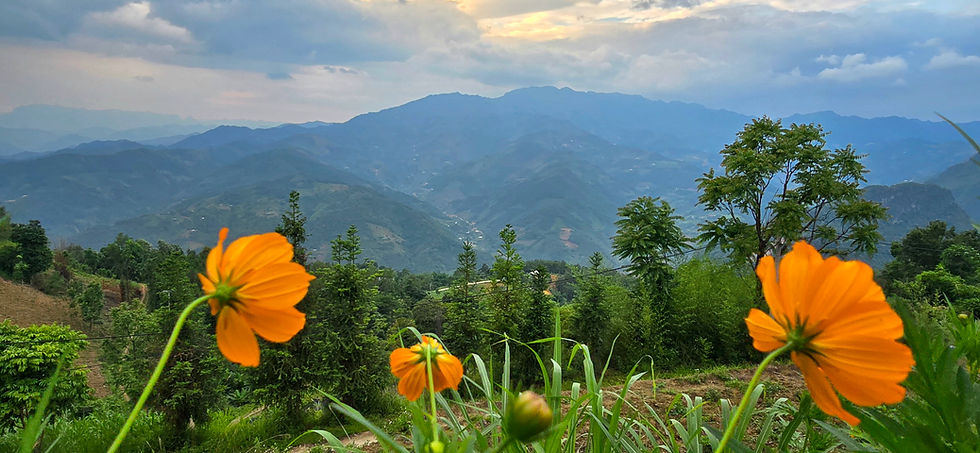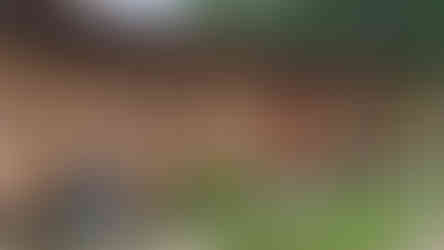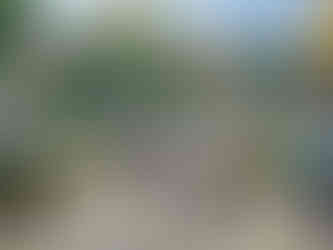Bao Lac
- Shannon
- Sep 1
- 4 min read
Updated: Sep 16
A Crossroad of Conflict and Culture
Bảo Lac Town, in the mountainous province of Cao Bang in northeastern Vietnam, lies close to the Chinese border. Though it may appear tranquil today, Bao Lac sits on ancient land that has long witnessed cultural collisions and rebellion. Historically, the region has been home to a patchwork of ethnic minorities, the Tày, Nùng, Hmong and Dao, whose livelihoods and belief systems evolved independently of the lowland Vietnamese dynasties. For centuries, these groups lived semi-autonomously in rugged isolation, resisting both Vietnamese imperial expansion and Chinese encroachment. Their resilience however, often turned into outright conflict as successive regimes tried to bring the highlands under centralised control.

During the Nguyen Dynasty in the 19th century, Bao Lac and the surrounding Cao Bang region were viewed with suspicion by the imperial court. The monarchy launched campaigns to "civilise" the highlands, which often meant forced assimilation, taxes and cultural suppression. Local resistance was fierce. Mountain banditry flourished and legends speak of ghost warriors, rebels who were said to rise from the forest mist to protect their lands. These tales blend animist belief with nationalist myth, suggesting that Bao Lac’s hills are haunted by the spirits of those who refused to kneel to lowland Emperors or foreign powers.
Colonialism intensified Bao Lac’s woes. When the French established their Indochinese empire in the late 19th century, they saw the northeast frontier as a vital buffer against Chinese influence and a source of raw materials. The French built outposts and coerced the locals into labour, sparking repeated uprisings. Among the most brutal was the Hmong revolt of 1914 - 1916, led by Pa Chay Vue, who preached that he received divine orders from heaven to drive out the French. Though not centered in Bao Lac specifically, the insurrection spread through the region and ignited ethnic pride, particularly among the Hmong of northern Cao Bang. The French retaliated with scorched-earth tactics, leaving entire villages decimated.

The First Indochina War between 1946 and1954 brought another cycle of violence to Bao Lac. As the Viet Minh waged guerrilla warfare against French colonial forces, they used the dense jungles and steep terrain of Cao Bang as strategic strongholds. Bao Lac became a key supply route and refuge, making it a target for French patrols and air raids. Villagers were often forced to choose sides, either aid the revolution or face brutal reprisals. Oral histories passed down in the area recall the “long winter of fire,” when homes burned for days and the dead were buried in shallow graves to avoid detection by enemy planes.
After the Geneva Accords in 1954, North Vietnam gained control of Bao Lac but peace was fleeting. During the Vietnam War (or the American War, as it's known in Vietnam), the towns proximity to the Chinese border made it a vital node in the supply chain feeding the Ho Chi Minh Trail. When China invaded Vietnam in 1979 in the brief but bloody Sino-Vietnamese War, Cao Bang was on the frontlines. Though most of the heaviest fighting occurred farther east in Lạng Son and other border towns, Bao Lac suffered from the chaos, with some villages evacuated and others razed. Survivors tell stories of bayonet wielding Chinese soldiers appearing like ghosts in the fog and of villagers who vanished into the mountains, never to be seen again.

Dark legends linger in Bao Lac’s oral tradition. One such tale speaks of "Ma Rung" (the Forest Ghost) a cursed soul said to be a French soldier who deserted, went mad and cannibalised the locals during a brutal winter. Another speaks of a stone slab deep in the forest that bleeds if struck, believed to be the petrified heart of a Hmong warrior who was betrayed and executed by French officers. These stories aren’t told to children lightly, they carry warnings about trust, loyalty and the land’s violent memory. In animist belief, the landscape itself holds grudges, a waterfall might be the mourning cry of a murdered chieftain’s daughter, a cave, the hiding place of an entire village swallowed by betrayal.
Today, Bao Lac wears a quiet mask. The town has grown modestly with new roads and border trade with China, yet shadows of its turbulent past linger. Local shrines still bear the soot of long-extinguished fires and the bones of the lost are sometimes unearthed by farmers after heavy rain. To walk through Bao Lac is to walk through a palimpsest of war and remembrance. It is a place where history is not sealed in books, but carried in the breath of wind through pine needles, in the quiet glances of elders and in the blood red earth beneath your feet.

Bao Lac Town, Bao Lac District, Cao Bang Province, Vietnam
Bao Lac is located approximately 4 to 5 hours' drive from Cao Bang city. Regular buses operate on this route, primarily serving visitors heading to nearby attractions like waterfalls. A return bus fare is around 400,000 VND. For a more comprehensive experience, many travel agencies offer multi-day tours that include visits to Bao Lac and other natural sites in the region, often providing better value. We participated in a 5 day / 4 night motorbike tour for $500 AUD, which included most food and accommodation.

Thanks for reading about Bao Lac. Check out more awesome destinations here!
Bao Lac - A Crossroad of Conflict and Culture



























